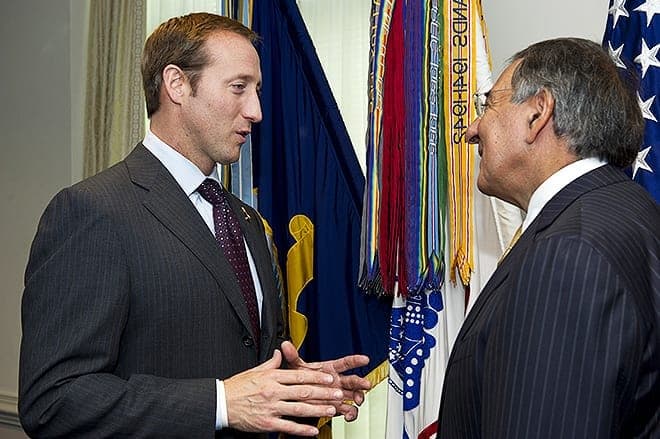Future of the Conservative party


110930-D-BW835-006¬¬Canadian Minister of Defense Peter MacKay, left, speaks with Secretary of Defense Leon Panetta before sitting down to a meeting in the Pentagon in Arlington, Va., on Sept.30, 2011. Panetta and Mackay are meeting to discuss security matters of mutual interest. DoD photo by Erin A. Kirk-Cuomo. (Released)
Author: nicholas giokas- contributor
To say that the Conservative Party is in the midst of some soul-searching after their electoral defeat would be putting it mildly. The party was formed a scant twelve years ago in a merger between the Canadian Alliance and the Progressive Conservatives and is now facing its first real experience of being an opposition government. That merger between the populist and progressive wings of Canadian conservatism is inevitably going to be tested when the leadership election comes around in 2017. In the meantime, Canadian conservatives are left to debate over the direction of the party, which will be centered on three major issues – political geography, messaging, and core ideology.
Usually in post-electoral autopsies, the political geography looks dire; parties are usually forced into their core regions and the task of creating a national campaign becomes far more difficult. In the case of the Tories, there’s a glimmer of hope. Yes, they were largely held to their strongholds in the Prairies and southern Ontario, but they did manage to make gains in an unlikely place – Quebec. The shift of social conservatives in Quebec to the Tories offers an opportunity to rebuild an ‘Eastern Strategy’ that had declined in the final stages of the Harper Conservatives. The danger they currently run mirrors the way of the Alliance Party, which is being resigned to victory in Western Canada without being able to truly break out in the east. Being geographically restricted would destroy any large-scale viability in future election cycles. Harper had done great things for the new party, but if he did do lasting damage, it was being unable to unbind the Conservative Party’s association with and reliance on the western provinces. If the party hopes to break back into government, they need to re-analyze how they can market themselves down east.
That ‘marketing’ is going to be heavily driven by the messaging the Tories decide to go with. There are several potential candidates that would open up very different avenues for the party to go down. Kevin O’Leary has taken up the populist mantle in the party after the election. Say what you will about his views, but he has tied himself directly to the Albertan oil economy. Now, the leadership election is far on the horizon, but it’s the initial issues that draw people to the candidates and invariably drive the candidates, and therefore, the party’s message. By tying the populist wing of the party to the western provinces even more than they are now, they would run the risk of pigeonholing themselves in the next election. Like it or not, the next leader has to be either progressive enough for easterners or have a more open federalist stance in their populism to keep the conservatives down east voting blue. Peter Mackay has been floated as a potential Progressive candidate that could regain some losses further east, but he could pose risk for the populist base in the west. Both men represent the opposite ends of the ‘big tent’ coalition, so it makes sense why the media would focus on them – they offer very different paths of the potential party message.
In essence, the coming leadership election is inevitably going to be the crucible for the Conservative Party. It’s easy to see a path for populism to drive Canadian conservatism into the future. The Liberals used it effectively in the past election and the Tories in the UK have experimented with it enough to give a roadmap for utilizing a more populist base in a parliamentary system. However, looking south of the border should give Canadian conservatives pause. It’s far too easy for populism to turn into demagoguery. On the other hand, striking too hard with a progressive message and going for the more moderate approach carries risks as well. The Liberals have entrenched themselves in a liberal populism that will either force the NDP to continue to pursue the center or return to their more labour-driven roots. If the NDP and Conservatives both elected for a moderate route, it could lead to split votes and a stronger populist blowback in the future.
And then there’s the issue of social conservatism. This leadership election will define what it means to be a Canadian conservative into the near future. The honest fact is that a smaller, but incredibly passionate, part of the Party are social conservatives who hold some views that are more unpopular with the Canadian electorate. So then there’s the added game theory of whether or not potential candidates play to a smaller aspect of the party that’s far more devoted than some of the other wings. Overall, the Tories look to be playing a game of Goldilocks until the leadership election in 2017, by which time they hope to have already found a candidate that is suitable enough for the entirety of the ‘big tent,’ but is far from an empty suit.









